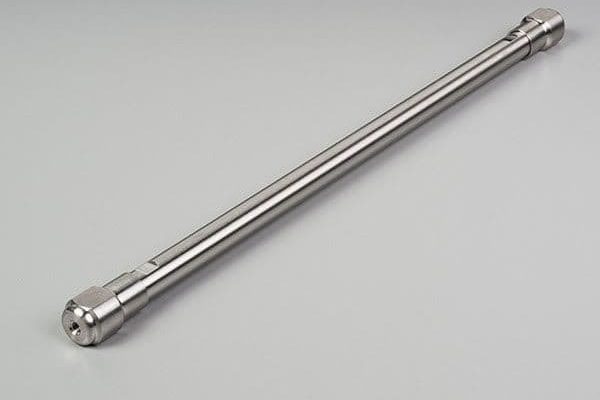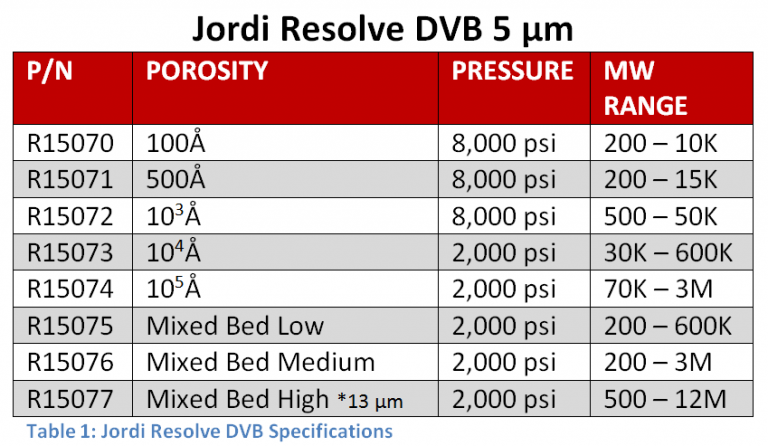Gel Permeation Chromatography (GPC) is a powerful technique that provides a direct measurement of molecular weight, a critical property in characterizing natural and synthetic polymers. There is no universal GPC system with the capability to separate every polymer-based exclusively on size, so how do you choose the correct column tailored specifically for your sample?
Choosing a Mobile Phase
It all starts with the mobile phase. What is your sample polymer soluble in? A polymer that is insoluble cannot be analyzed by GPC, making solvent selection paramount. For an efficient GPC separation based only on size, the optimal solvent should be strong enough to minimize the sample-column interaction.
Don’t Sacrifice on Resolution
When choosing GPC columns, it is essential to decide on the level of resolution desired for your samples and standards. Remember the golden rule: resolution and separation efficiency increases directly with the column’s volume (pore volume). The length and internal diameter (ID) of each column should be carefully considered prior to purchasing any column set. We would suggest:
- Using a longer column, or multiple columns in series (two 30 cm in series vs. one 30 cm column)¹
- Choosing a column with a larger internal diameter (22 mm vs. 7.8 mm)
An advantageous solution to poor resolution is to include an additional column in series to your current system. “Free resolution” can be obtained by increasing the column temperature or by choosing the optimal injection volume/concentration for your system.
Pore Size Matters
GPC utilizes a non-interactive stationary phase, composed of a porous network, allowing for an elution order based on decreasing molecular size. There are a number of pore sizes available, and each pore size excels at separating a specific molecular weight range (Table 1).The Mixed Bed column is a linear column, and is strongly recommended for routine or unknown sample analyses. The column pore size should be chosen based on the suspected molecular weight range of the polymer being analyzed.
“It’s Just a Phase…”
Let’s summarize what we know now:
- the chromatographic eluent based on sample solubility,
- the number of columns and dimensions based on resolution desired,
- and the pore size based on the suspected MW range of the sample
Would you like to learn more? Contact a member of the Jordi Labs team today with any questions about gel permeation chromatography, or selecting a GPC column.






